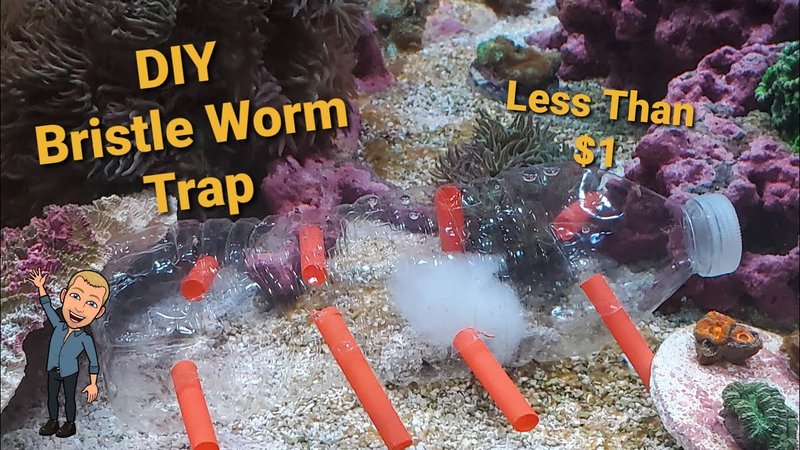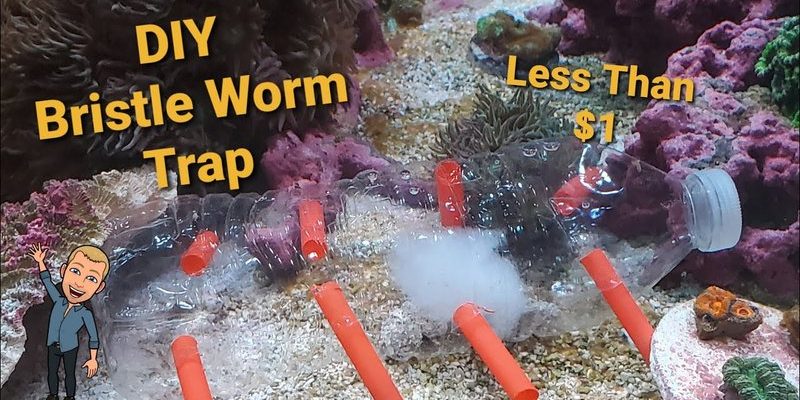
Bristle worms are fascinating creatures that belong to the polychaete family. They play a crucial role in their ecosystems but can deliver an unfortunate sting if you accidentally provoke them. If you’ve ever found yourself on the receiving end of a bristle worm bite, it’s essential to know the symptoms and remedies available to ease your discomfort. Think of this article as your friendly guide to navigating the tricky waters of treating a bristle worm bite, helping you get back on track with minimal fuss.
What Are Bristle Worms?
Bristle worms are a type of segmented worm often found in marine environments. They’re usually long, thin, and can be brightly colored, which is why they catch the eye of curious beachgoers and scuba divers alike. These fascinating creatures have tiny bristles, called setae, that can be quite sharp. When they feel threatened, they can unleash these bristles, leading to a painful sting.
You might be wondering, “Why do they even have bristles?” Well, those little guys use them for movement and to defend themselves against predators. Their bristles can detach and embed themselves in the skin, which leads to that annoying itching and burning sensation. So, if you’ve had a bite, you’re not alone—and now you’re equipped with the knowledge to handle it.
Symptoms of a Bristle Worm Bite
After a bristle worm bite, you might experience a variety of symptoms. The first and most immediate one is usually pain or tingling in the affected area. You may also notice redness and swelling, which can make it feel like an angry bee sting.
Here are the primary symptoms to watch out for:
- Intense itching: This can feel like a relentless urge to scratch, which only makes things worse.
- Burning sensation: It’s common to feel a stinging or burning sensation as your body reacts to the foreign bristle.
- Redness and swelling: The area around the bite may appear inflamed and sensitive to the touch.
If symptoms persist or worsen, you should definitely consult with a healthcare professional. It’s better to be safe than sorry, right?
First Aid for a Bristle Worm Bite
So, you’ve experienced the bite, and now what? First things first, let’s focus on immediate treatment. The goal here is to relieve pain and prevent infection.
1. **Rinse the Area**: Start by thoroughly rinsing the affected area with seawater—don’t use fresh water, as it can irritate the skin further.
2. **Remove Bristles**: If you see any visible bristles left in the skin, carefully remove them with tweezers. Don’t use your fingers, as you might just push them in deeper.
3. **Apply Cold Compress**: To soothe the pain, use a cold compress or ice wrapped in a cloth. This can help reduce swelling and numb the area for some relief.
4. **Avoid Scratching**: I know it’s tempting, but scratching will only make it worse. Try to resist the urge to scratch, as this can lead to infection.
These first steps are crucial, but you might still need some additional care depending on how your symptoms progress.
Over-the-Counter Remedies
Once you’ve managed the initial reaction, there are some over-the-counter treatments that can ease your discomfort further. Here are a few options to consider:
- Antihistamines: These can help with itching and swelling. Look for options like diphenhydramine (Benadryl) or loratadine (Claritin).
- Corticosteroid Cream: Applying a hydrocortisone cream can reduce inflammation and soothe irritated skin.
- Pain Relievers: Non-steroidal anti-inflammatory drugs (NSAIDs) like ibuprofen or acetaminophen can help manage pain.
Before trying any medication, it’s wise to read the labels and follow the recommended dosages. If you have any allergies or chronic health conditions, check with your doctor first.
When to See a Doctor
While most bristle worm bites can be treated at home, there are situations where you should seek medical attention. If you notice any of the following, don’t hesitate to contact a healthcare provider:
- Severe Symptoms: If the pain is unbearable or if you develop a significant allergic reaction, such as difficulty breathing or swelling in the face or throat.
- Signs of Infection: If the bite area becomes increasingly red, warm, and swollen, or if you see pus, you may have an infection.
- Persistent Symptoms: If the symptoms don’t start to improve after a few days, it’s time to get professional advice.
Remember, it’s always better to be safe with your health.
Alternative Remedies for Comfort
In addition to over-the-counter treatments, some people swear by alternative remedies. While not everyone may find relief this way, it’s worth a try if you’re seeking a more natural approach. Here are some to consider:
1. **Oatmeal Baths**: Adding colloidal oatmeal to your bath can soothe irritated skin. It has anti-inflammatory properties that can help with itching.
2. **Aloe Vera**: Known for its healing properties, applying aloe vera gel directly to the bite can cool the skin and promote healing.
3. **Tea Tree Oil**: This essential oil has natural antiseptic properties. Dilute it with a carrier oil and apply it to the bite area to reduce irritation.
While these remedies can help, they shouldn’t replace medical advice. Always consult with a healthcare professional if you’re uncertain.
Preventing Future Bites
Now that we’ve discussed how to treat a bristle worm bite, let’s talk prevention. Here are some tips to keep those little critters at bay:
- Wear Protective Clothing: If you’re swimming or exploring tide pools, consider wearing water shoes and long pants to protect your skin.
- Avoid Disturbing Habitats: If you see a bristle worm, it’s best to leave it alone. Disturbing their environment can provoke them to defend themselves.
- Educate Yourself: Familiarizing yourself with marine life in your area can help you recognize potentially dangerous creatures before they become a problem.
By taking these simple precautions, you’ll reduce the likelihood of getting bitten in the first place.
Wrapping Up
Dealing with a bristle worm bite can be an unexpectedly uncomfortable experience. However, by understanding the symptoms, knowing how to treat them, and being prepared for the future, you can handle it like a pro. Just remember to act quickly, avoid unnecessary irritation, and seek medical help if needed.
So, whether you’re a beach lover or just someone curious about marine life, keeping these tips in mind will make your next seaside adventure much more enjoyable. Here’s to safe exploring and leaving those pesky bristle worms alone!

